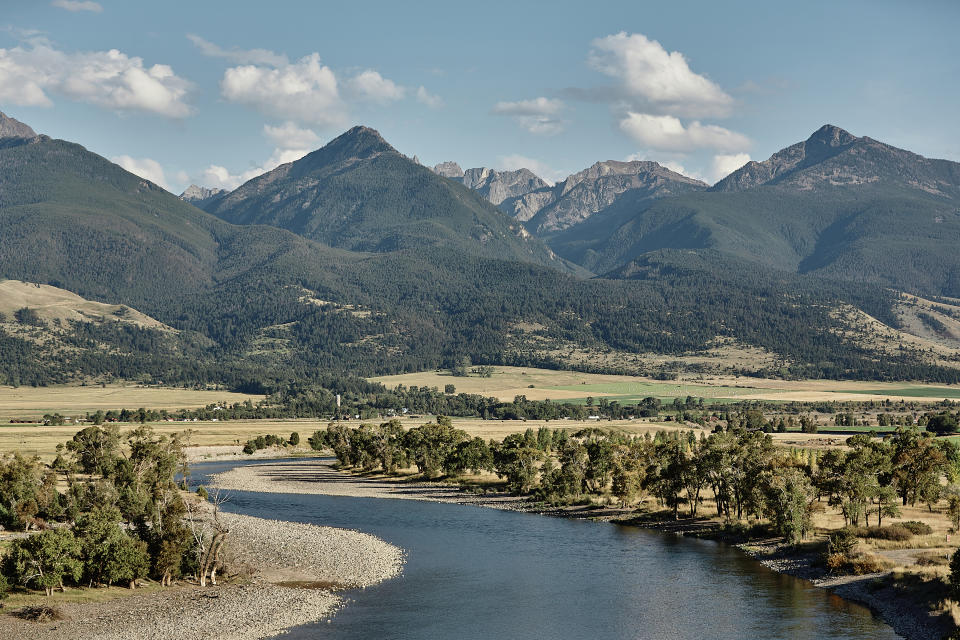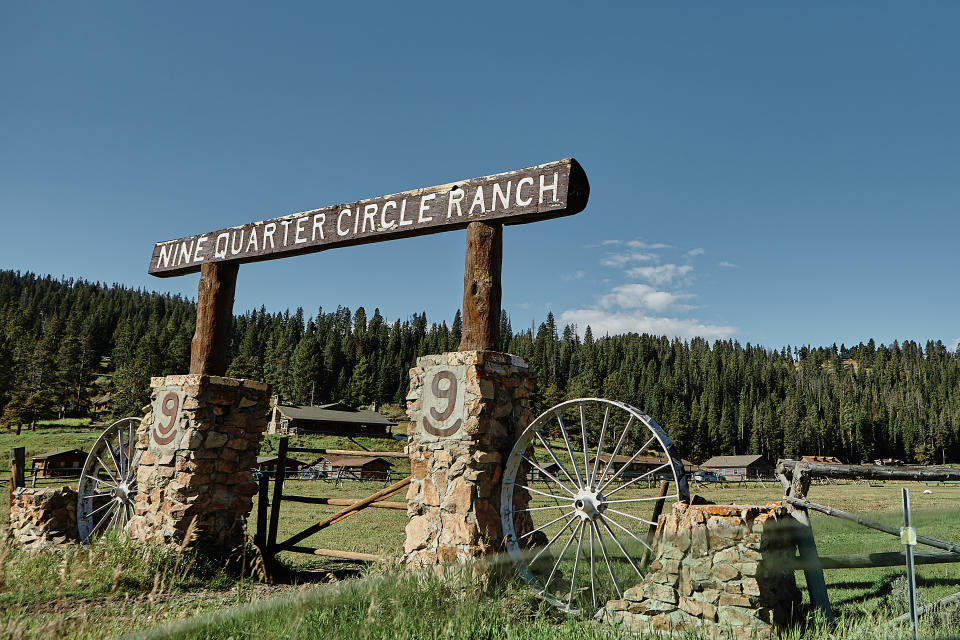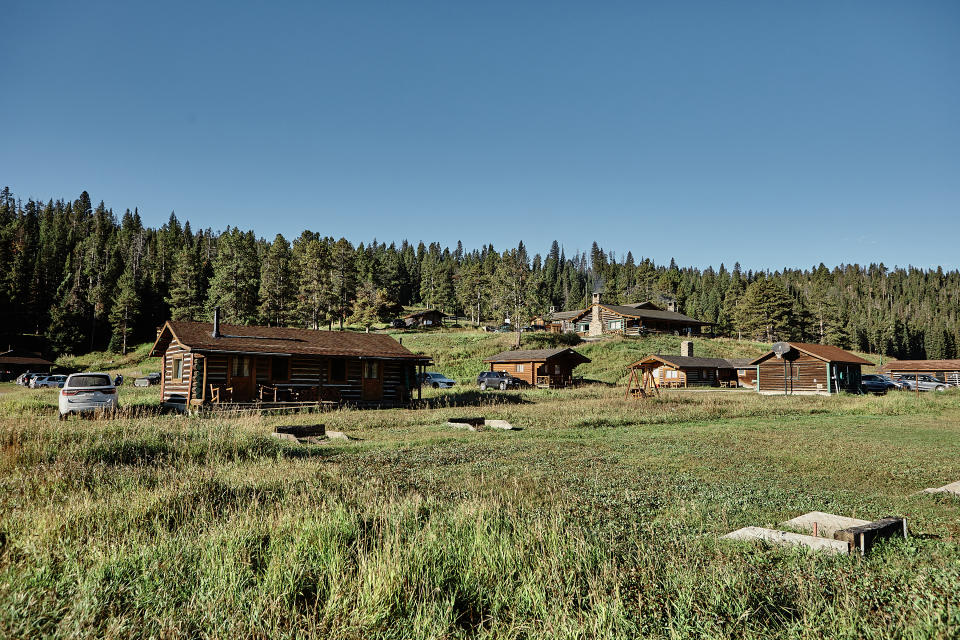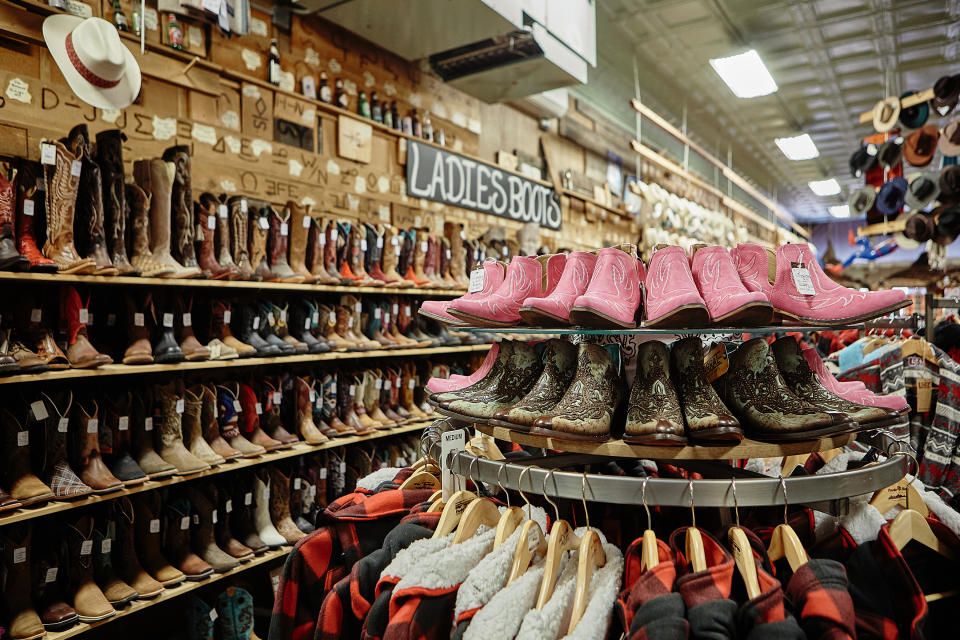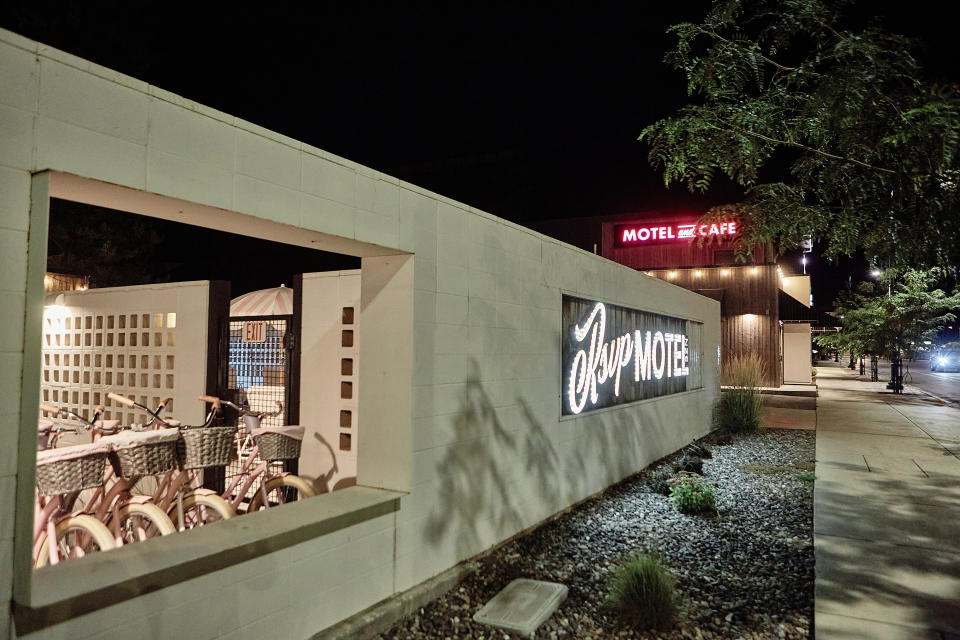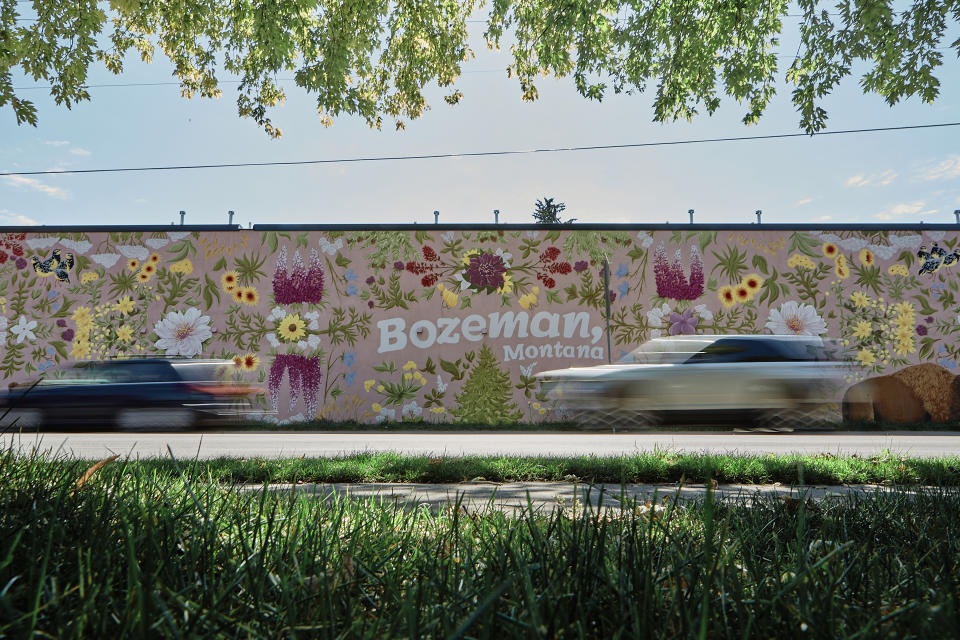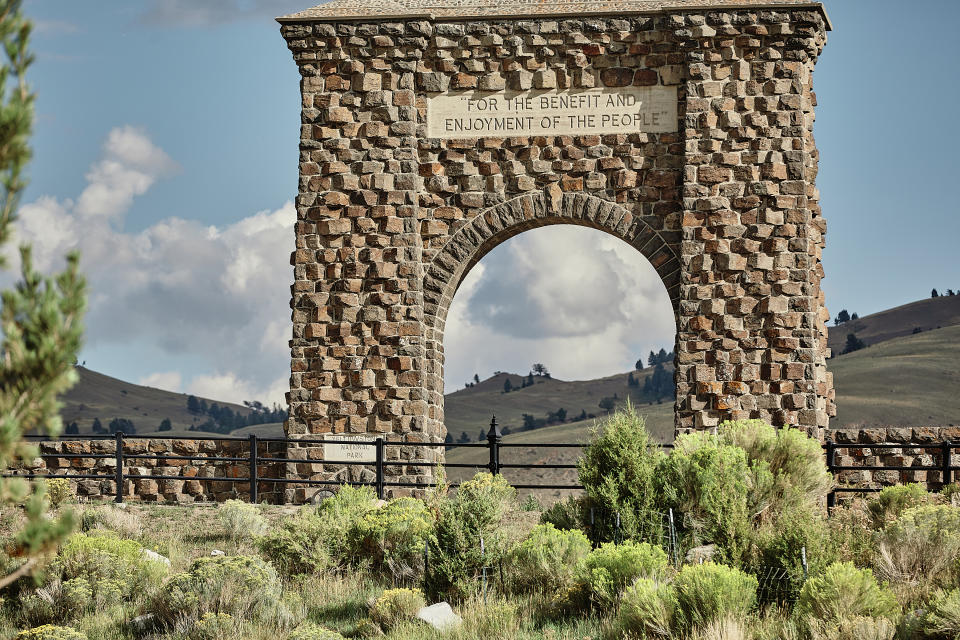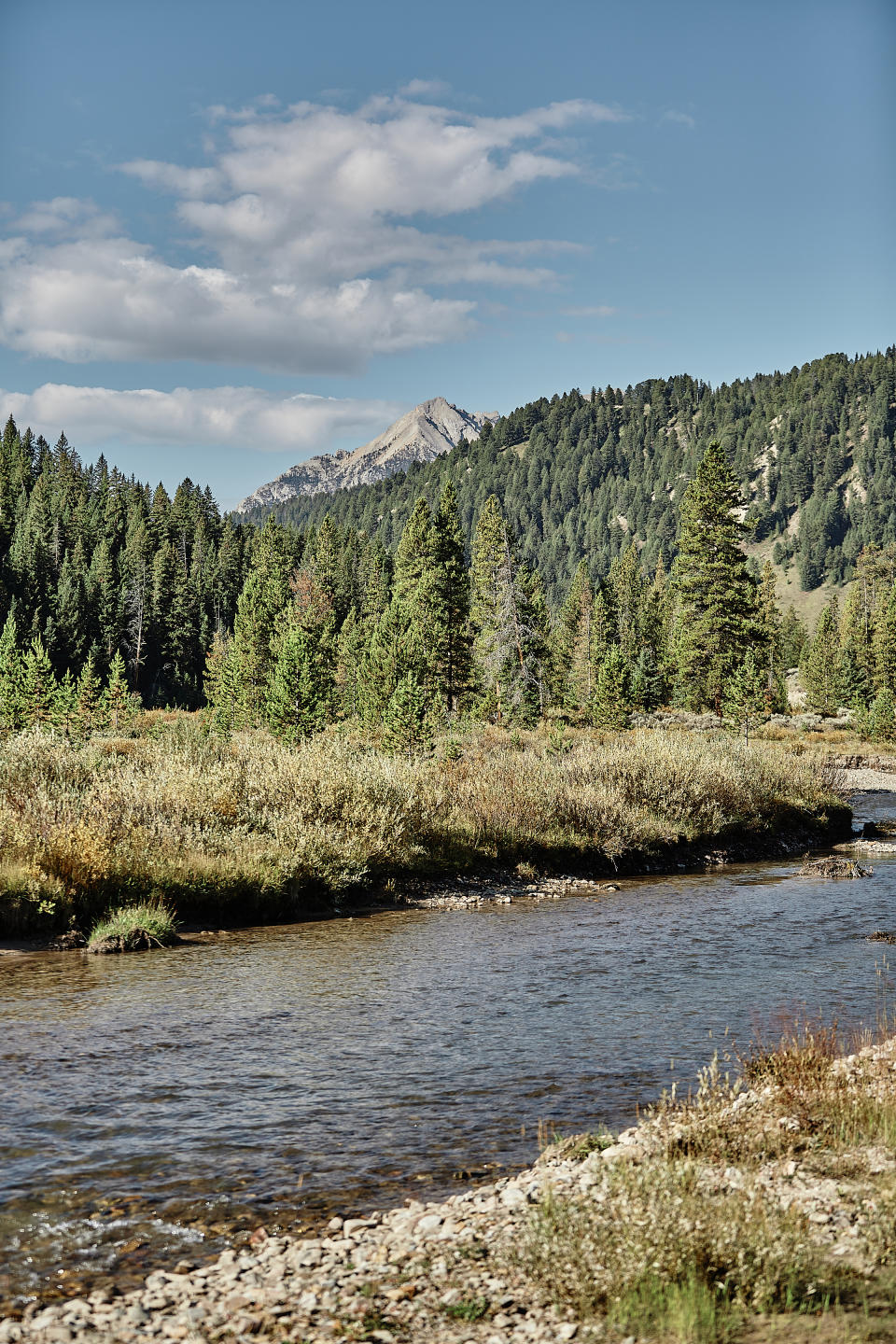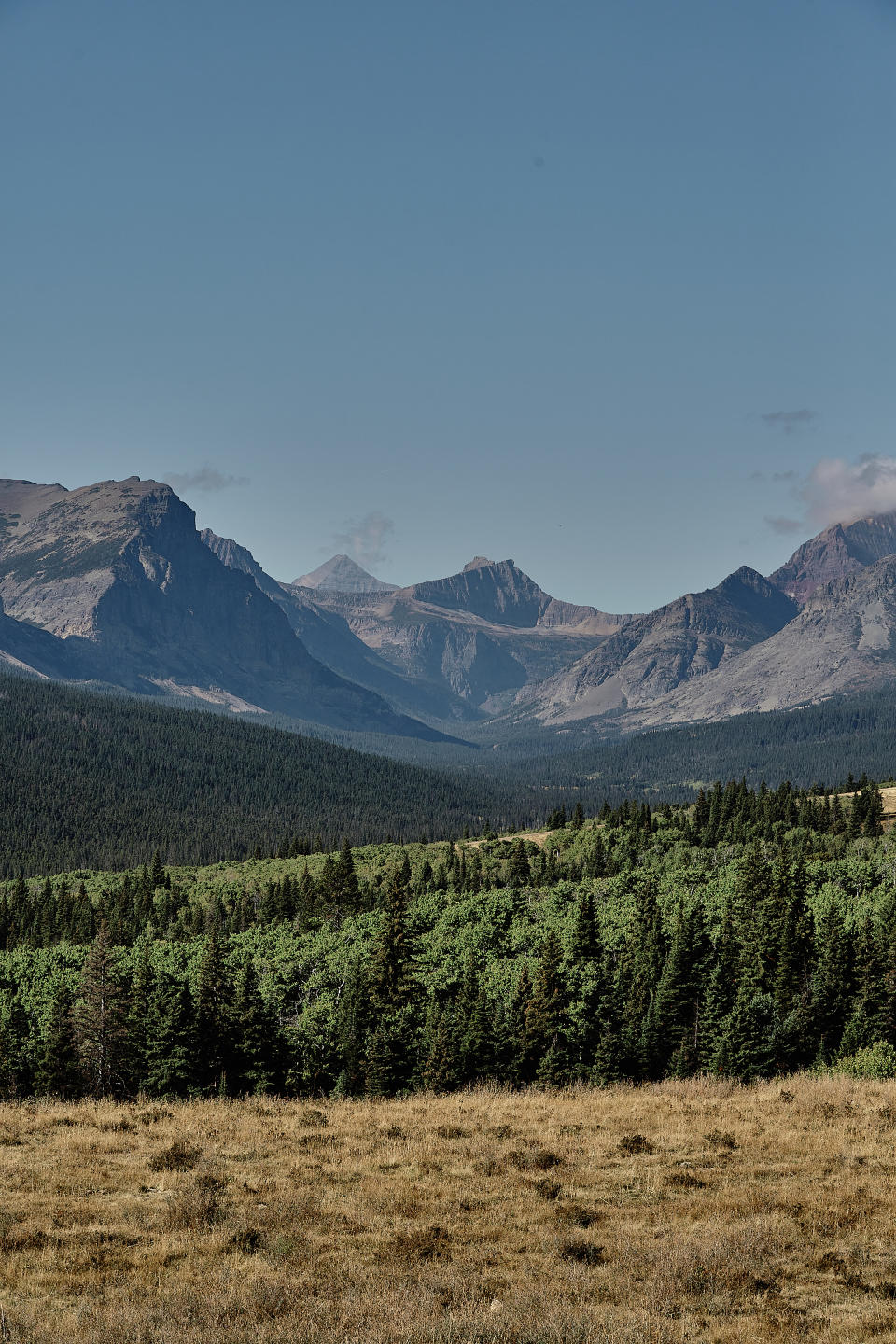The Duttons are fake, but the 'Yellowstone' tourism boom is very real
- - -
Correction: A previous version of this article incorrectly said Ted Turner owns about 2 million acres in Montana; he owns about 2 million acres across the country. The article has been corrected.
- - -
BOZEMAN, Mont. - The Taylor Fork Creek, a tributary of Montana's famed Gallatin River south of Bozeman, rushes downstream from the steeply slanted high peaks of the Taylor Peaks to the west, wending through a high mountain and wildflower-studded meadow as the horse corrals for the Nine Quarter Circle Ranch come into view. At 7,000 feet of elevation, the view is breathtaking.
It's also the natural backdrop for one of TV's most talked-about shows.
These days when people say "Yellowstone" you can't be certain they're referring to America's first national park. More often than not, they're referring to one of television's most popular series by the same name. Paramount Network's drama about the fictional Dutton family ranch set in Montana's Paradise Valley has smashed viewer rating records and is driving millions of tourists to visit the state.
"It's absolutely a welcome surprise," said Sally Kelsey, co-owner of the Nine Quarter Circle Ranch located in the 100-mile stretch of highway between Bozeman and West Yellowstone. "Every week or so someone tells us: We decided to look into dude ranches because of the show 'Yellowstone.'"
The drama, which debuted in 2018 and has fans awaiting the second half of the final season, stars Kevin Costner as John Dutton, the family patriarch and owner of the largest cattle ranch in the state - Yellowstone Dutton Ranch. The series follows family conflict at the ranch and often bloody conflicts between the bordering, fictional Broken Rock Indian Reservation and corporate land-development projects.
"We definitely have seen an uptick in interest because of 'Yellowstone,'" said Lucy Beighle, director of communications for Glacier Country Tourism, a nonprofit that represents the Western Montana region, where Seasons 4 and 5 were filmed.
"If Montana wasn't already on the map, and if people have seen 'Yellowstone,' it certainly is now," she said.
Some tourists come to Big Sky country looking for the "Yellowstone" lifestyle - cowboy hats, ranches and all - even if the drama isn't real. And that means sometimes visitors show up with misconceptions about the state.
---
'It's as beautiful as I thought it'd be'
Kelsey runs Nine Quarter Circle Ranch with her husband, Kameron, whose grandfather, Howard Kelsey, purchased it in 1946. The property, situated in an alpine meadow bordering Taylor Creek, was established as a dude ranch in 1912. The rustic and family-friendly guest ranch offers all-inclusive weekly stays with quintessential Montana activities like horseback riding, fly-fishing and hiking.
Out of an extended family of 10 from the suburbs of Minneapolis, Greta Anderson was the only one who'd ridden a horse before staying at the Nine Quarter Circle Ranch. Her in-laws planned the trip for her family and her husband's siblings. For everyone it was their first trip to Montana.
Anderson and her family regularly watch "Yellowstone," and she said the show had some influence on picking a dude-ranch vacation.
"It's as beautiful as I thought it'd be," said Anderson. "Why would anyone want to live anywhere else?"
The show has had a major effect on Montana's tourism economy, and businesses across the entire state are feeling it. In a joint study this year produced by the Bureau of Business and Economic Research and the Institute for Tourism and Recreation Research at the University of Montana, "Yellowstone" tourists spent $730 million in Montana in 2021. Two million visitors said the show inspired their decision to visit Montana, according to the study.
Anderson admitted that she and her family, along with the other guests, talked a lot about the show throughout their stay. They joked about which of the ranch's wranglers look like characters from the show. Her husband, if supplied with the right cowboy hat, would look like the Dutton ranch foreman, Rip Wheeler, they said.
Visitors want to look the part of the Duttons, too. At Western Outdoor in downtown Kalispell in the northwest corner of the state, the area's largest Western retail store says all things related to "Yellowstone" are driving business.
"Some people want us to shape hats like Rip's. The lady folks want Beth Dutton's look. . . . They always want to know what hat she's wearing," said Kim Parker, Western Outdoor's manager.
In case you're wondering, Beth Dutton's hat is a Stetson crushable, and they carry it.
---
Fueling Montana misconceptions
Bozeman, with a growing population of more than 53,000, has long attracted celebrities, actors and billionaires. Not far from the city's Main Street, sisters Hillary and Haylee Folkvord, who were raised in Three Forks, opened RSVP Motel and Farmer's Daughters Cafe and Eatery five years ago. Hillary says the show has only elevated Bozeman's celebrity status.
"My friends from back East watch it religiously. And they tell me: It looks so magical and majestic - it's just wide open spaces," she said. "I think that's what people are craving right now. Montana gives you that."
But Hillary points out that "Yellowstone" isn't an accurate representation of ranching, which the show often depicts as the old Wild West with gun battles and assassination attempts.
"They're not showing the hard days when it's below zero and the calves are frozen," she said, adding, "but I think the show has been good for us. It shows how beautiful Montana is. And we hope to preserve that as stewards. That's really important to us."
Nathan St. Goddard, a Blackfeet tribal member and owner of Johnson's cafe near Glacier National Park, is keenly aware of "Yellowstone's" significant impacts on the tourism economy - and the misconceptions it can generate.
For starters, the real property used as the Yellowstone ranch in the show is the Chief Joseph Ranch in Darby, Mont., a nearly 300-mile drive from the Montana entrance of Yellowstone National Park. Although the series is set in Montana, it was actually filmed in Utah for the first three seasons. Then there's the fashion, high drama and picture-perfect weather.
"One thing I've noticed is that 'Yellowstone' was only shot in the summer so people are blown away that it's cold, that the wind blows up here. It looks like it's 80 degrees and perfect temperatures in 'Yellowstone,'" said St. Goddard, who serves on the Montana Tourism Advisory Council.
His grandparents started Johnson's cafe in 1950, first serving the Park Service's trail crew and expanding to cater to the public. St. Goddard was the Blackfeet's attorney general. After his mother's death in 2016, he resigned and took ownership of Johnson's, which is on the border of the Blackfeet reservation.
While there's a fair bit of grumbling across the state, mostly from residents, about the uptick in tourists and Montana's increasing popularity as a major destination, he views the state's fame as mostly positive. "People are spending their money in Montana, and spending their money in local establishments."
Like many residents across the state who have strong opinions about "Yellowstone," St. Goddard says there's a lot the show gets wrong. For example, the characters are too well-dressed.
"There's no Indian that wears a suit 24/7," he joked, referring to Chief Thomas Rainwater, the show's tribal chief on the fictional Broken Rock Reservation. "He's in a suit all the time, rain or shine."
The fine suits also extended to Jamie Dutton and his political contemporaries in Helena, the state capital. As the tribal attorney general, St. Goddard was frequently in court in Helena. "I think it's a requirement that you wear your great-grandpa's suit. Every legislator wears brown and the suits aren't tailored."
Mark Greeno of Bozeman, who has stayed at Nine Quarter Circle Ranch for six years with his wife, Sue, said "the show has given our ranchers a bad name."
The explosive violence, political corruption and dumping of bodies at the "train station" (a canyon) isn't an accurate portrayal of any rancher that Greeno knows. The show includes highly dramatized elements of fantasy and according to showrunner Taylor Sheridan in a recent interview for the Hollywood Reporter, "Yellowstone" was intended to be "essentially 'The Godfather' on the largest ranch in Montana."
---
A real estate and outdoor tourism boom
For all of the show's creative liberties of modern ranch life in Montana, it does hit upon a tension affecting the entire state: a booming housing market that's driving prices outside the reach of local residents. There's also been increased development for the wealthy like the private luxury Yellowstone Club in Big Sky, north of the Kelsey ranch, where celebrity members have included Bill Gates, Tom Brady and Justin Timberlake.
Beyond Montana's most famous landowner - Ted Turner, who owns three ranches in the state and about 2 million acres across the country - other wealthy names have been drawn to the ranch lifestyle, with John Mayer, Michael Keaton and Atlanta Falcons owner and Home Depot co-founder Arthur Blank among property owners.
Interest in outdoor tourism increased during the pandemic as Americans fled cities and sought socially distanced vacations after being cooped up. Montana was no exception. During the pandemic years of 2020 to 2021, the state's outdoor recreation economy increased nearly 30 percent, according to a study by the U.S. Department of Commerce's Bureau of Economic Analysis.
Yellowstone, the park, saw its busiest year on record in 2021, with more than 4.86 million visitors, while Glacier had its second-busiest year with more than 3.08 million visitors. In 2022, the two parks had a combined 6.2 million visitors, exceeding Montana's own population by nearly sixfold.
But with that brought more stories of tourists behaving badly - dangerous animal encounters, traffic jams and visitors wading into Yellowstone's thermal pools.
Educating the surge in visitors about environmental stewardship and recreating responsibly is needed more than ever, notes Greeno, who's recently observed concerning behavior. For the first time in decades, he said, he's found trash alongside the Yellowstone River.
It's a concern that Glacier Country Tourism also shares, and in 2021 the organization launched an official stewardship program to balance visitor growth with the sustainability of Montana communities, natural resources and quality of life for residents.
Although the economic effects of a tourism increase are positive, tourism can also create problems by placing pressure on the environment and infrastructure, and amplifying issues with the workforce and affordable housing - all of which can contribute toward negative resident sentiment toward tourism.
A goal for the Kelseys, the owners of Nine Quarter Circle Ranch, is to create more stewards of this unique landscape, a sentiment strongly shared by many Montanans. "We have so many people we are able to share this land with," Sally said. "So when there is a need to call on someone to talk about clean water or protecting open landscapes, we have a group of people to provide that support."
Sally says she has to help manage expectations for new guests and Dutton wannabes who, for example, can't gallop on a horse for hours and hours; they don't have the stamina. And no, people are not branded, only cattle. She knows that what "Yellowstone" offers is something that many people around the world don't get to experience.
"It's the scenery that is a big pull, and I think is why people watch it. Our life here is so different from city life," she said. "People are in awe when they get here."
Related Content
Families of Israeli hostages held by Hamas cling to digital clues
Race isn't real, science says. Advocates want the census to reflect that.

 Yahoo Sports
Yahoo Sports 